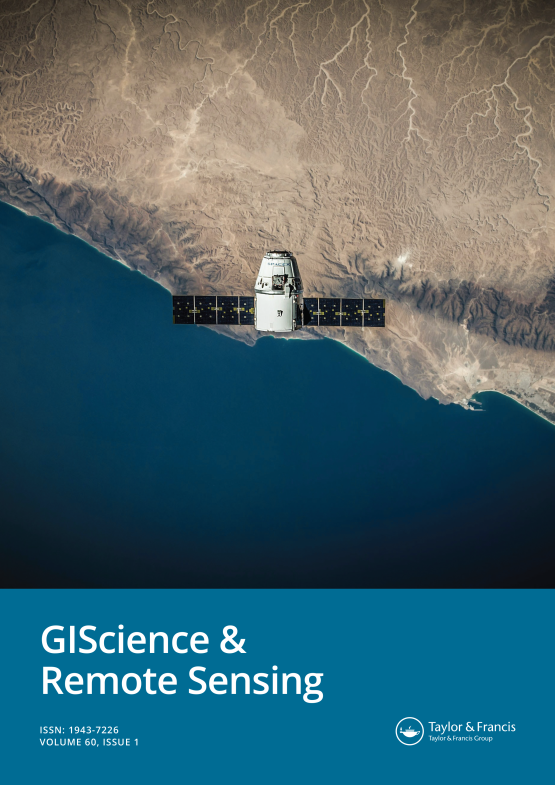Submit a Manuscript to the Journal
GIScience & Remote Sensing
For an Article Collection on
Leveraging Remote Sensing Data and Techniques for Greenhouse Gas (GHG) Emission Monitoring, Analysis, and Assessment
Manuscript deadline
30 June 2024

Article collection guest advisor(s)
Prof. Masoud Mahdianpari,
Memorial University of Newfoundland, Canada
Dr. Fariba Mohammadimanesh,
C-Core Research Institute, Canada
Leveraging Remote Sensing Data and Techniques for Greenhouse Gas (GHG) Emission Monitoring, Analysis, and Assessment
Following the industrial revolution, human activities have triggered unprecedented changes in the Earth's climate, with greenhouse gas (GHG) emissions emerging as a key driver of global warming. While the conversation often revolves around gases released from burning fossil fuels, it is equally vital to examine emissions from other sources such as landfills, agricultural activities, and natural resources like wetlands. The importance of satellite data for monitoring GHG emissions cannot be overstated. Satellites provide a comprehensive and global perspective, thus enabling monitoring of large-scale emission sources, such as industrial facilities and landfills, as well as changes in land use and deforestation that contribute to GHG releases. These observations from space offer a valuable tool for understanding the spatial and temporal patterns of emissions, facilitating more effective policy and mitigation strategies.
Climate change and greenhouse gas emission monitoring are critically important due to its global impact on the environment, human health, and socio-economic systems. Rising temperatures, altered weather patterns, and the associated effects on ecosystems and biodiversity highlight the urgency of understanding and mitigating these emissions. The social and economic impacts are significant, as vulnerable communities may bear the brunt of climate change effects. Addressing GHG emissions is essential for informing effective policies, promoting sustainable resource management, and fostering international collaboration to tackle this pressing global challenge. Remote sensing of atmospheric GHGs and Earth's surface offers opportunities to measure GHG fluxes, regional and global budgets, trends, spatial distributions, and seasonality. Ongoing advancements allow for the identification of emissions from human activities at high resolutions, pinpointing specific sources. This time/cost efficient monitoring capability enhances our ability to identify emission hotspots, assess the effectiveness of emission reduction measures, and verify compliance with international agreements. In addition, the use of satellite data enables the creation of accurate emission inventories, helping policymakers and researchers refine their understanding of the sources and trends of GHG emissions. Moreover, the integration of Earth Observation (EO) data into models introduces novel approaches to modeling and avenues for minimizing uncertainties in GHG flux estimates.
This Article Collection seeks to comprehensively explore advancements in monitoring and understanding greenhouse gas (GHG) emissions through cutting-edge technologies for showcasing remote sensing capabilities in facilitating GHG flux quantification. Manuscripts submitted to this collection should focus on, but are not limited to, the following subtopics:
- Novel methodologies and technologies for GHG detection and quantification on both offshore and onshore environments.
- Insights into the sources, sinks, and distribution of GHG emissions worldwide.
- Comparative analyses of emissions from different sectors and regions.
- Landfill emissions and waste management.
- Strategies for monitoring and mitigating GHG emissions from landfills.
- Assessments of satellite capabilities, such as Landsat, Sentinel, PRISMA and EnMAP in GHG monitoring.
- Advancements in data collection and analysis for comprehensive atmospheric information.
- Collaborative studies combining remote sensing data and techniques with atmospheric chemistry for effective environmental management.
- Application in atmospheric inverse modelling.
- Enhanced ecosystem modelling by integrating data into land ecosystem models to see how terrestrial environments contribute to GHG fluxes.
Manuscript submissions may include various article types, such as Original Research and Reviews, Data Notes, or Method articles. The collection aims to foster a multidisciplinary dialogue, encouraging diverse perspectives to advance our collective understanding of GHG monitoring approaches and enhance the accuracy in flux estimation and contribute to climate and environmental science.
Please contact Commissioning Editor Pamela Hohl with any questions ([email protected]).
Benefits of publishing open access within Taylor & Francis
Global marketing and publicity, ensuring your research reaches the people you want it to.
Article Collections bring together the latest research on hot topics from influential researchers across the globe.
Rigorous peer review for every open access article.
Rapid online publication allowing you to share your work quickly.
Looking to Publish your Research?
Find out how to publish your research open access with Taylor & Francis Group.
Choose open accessSubmission Instructions
All manuscripts submitted to this Article Collection will undergo desk assessment and peer-review as part of our standard editorial process. Guest Advisors for this collection will not be involved in peer-reviewing manuscripts unless they are an existing member of the Editorial Board. Please review the journal Aims and Scope and author submission instructions prior to submitting a manuscript.